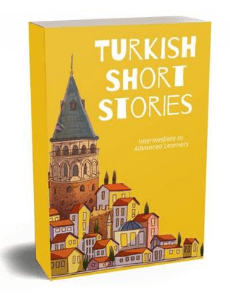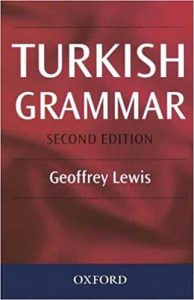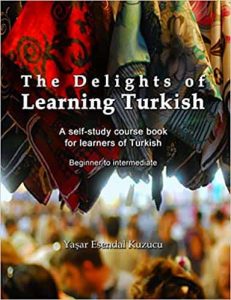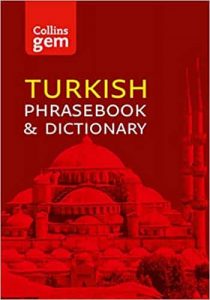You can find free Turkish grammar lessons on this page. We all know that learning only grammar can be boring. New techniques focus on different methods without grammar teaching and fail in the end. We are grown-ups and we have a higher mental capacity than children. Using grammar knowledge effectively makes a great amount of progression.
8 Important Rules in the Turkish Grammar That You Need to Know
There are some basic grammar rules that will make your life easier when learning Turkish.
- Two vowels or two consonants rarely follow each other.
- Vowels from a specific type need to proceed the same type of vowels.
- Consonants from a specific type need to proceed the same type of consonants.
- If you are attaching a suffix to a proper noun, you’ll need to use an apostrophe to separate the suffix from the word.
- Word order in English is subject + verb + object whereas in Turkish subject + object + verb
- Non-continuant voiceless consonants (p,ç,t,k) tend to go voiced because it’s easier to say!
- There are three different buffer letters: ‘y’,’n’ and ‘s’. They prevent two vowels to come after each other.
Big websites and apps try to teach you every language with the same syllabus by matching photos and words. And they fail in the end. For that reason, we have prepared these lessons and explained everything you need to know about Turkish grammar.
Turkish Grammar: 19 Essential Lessons
Each topic has its short summary below. To see the details, click on the topic.
1. Beginner: Alphabet
- List of 29 letters
- <Ü, İ, Ö, Ç, Ğ, Ş>
- Some history
- Changes in loanwords
- TDK (turkish language society)
2. Beginner: Vowels
- Vowels
- Back and front
- Rounded and unrounded
- Soft g (eng. yumuşak g)
3. Beginner: Vowel Harmony
- Def. of vowel harmony
- Agglutinative languages
- Rule 1: minor vowel harmony
- Rule 2: major vowel harmony
- Examples and tips
4. Beginner: Apostrophe and Circumflex Accent
- “Kesme işareti” (‘) (apostrophe)
- How to say ‘what’s up’?
- Capital letter rules
- The Circumflex Accent
- â (şapkalı a) and how to type it.
5. Beginner: Var/Yok
- Var/Yok
- Yok: There is not / There are not
- Var: There is / There are
- Paradigm of var/yok
- Question Form: Var mı? / Yok mu?
6. Elementary: Cases
- What is a ‘case’?
- Buffer-letter
- The absolute form
- Accusative
- Genitive
- Dative
- Locative
- Ablative (also its etymology)
7. Elementary: Consonant Alternation (Consonant Harmony)
- ‘K’ to ‘G’
- Proper nouns
- Exceptions in the written language
- P,ç,t > b,c,d
8. Elementary: Verb ‘to be’
- Olmak ya da olmamak
- “to be”
- Negative form
- The past form of “to be”
- Hayatta en hakiki mürşit ilimdir.
- Conditional of to be
- Inferential of to be
- Değil
9. Elementary: Possessive Determiners (Personal Suffixes)
- Benim, senin, onun, bizim, sizin, onların
- Food: sarma, dolma
- The absolute form
- Words indicating nationality
- Exceptions
10. Elementary: Loanwords in the Turkish Language
- Etymology of ‘coffee’
- French and Italian loanwords in Turkish
- ‘Muharebe’ (eng. War), ‘Kitap’ (eng. Book), ‘Zan’ (eng. Doubt)
- Recent loanwords
11. Elementary: Present Tense
- What is the present tense?
- When to use present tense?
- Şimdiki zaman
- Interrogative form
- Singular/Plural
12. Elementary: Turkish Word Order
- SVO and SOV
- Adverbs
- Adjectives
- Emphasis
- Inverted Sentence
13. Intermediate: Future Tense
- -ecek / -acak
- How to use Future tense?
- Future past
- Ancient future
- Examples
14. Intermediate: Turkish Adverbs
- Adverb suffix -CA
- Adjective or Adverb?
- Examples
- Convert the Noun into Adverb
- Cases with Adverbs
- Çok and Daha
- Adverbs of frequency
- Months and Season
15. Intermediate: Conjunctions
- What is conjunction in Turkish?
- ‘Dahi anlamındaki -de ayrı yazılır.’
- Ve (and)
- Ama, Ancak Fakat, Lakin (but)
- Madem, madem ki (seeing that)
- Ne … Ne (Neither nor)
- Gerek, Hem, İster, Ha, Ya
- İse
- Ki (that)
- Diğer taraftan, yoksa, çünkü etc.
16. Intermediate: Miş-Past (Reported Past Tense)
- Geçmiş zaman
- I gather that you have gone
- Negative of miş-past
- Interrogative of miş-past (Have I read?)
- Past perfect tense
- Video!
17. Intermediate: Postpositions, Circumpositions and Prepositions
- İçinde, içerisinde (in)
- Üzere, nezdinde, içerisinde
- Üstünde (on)
- Yan, alt, dış (side, under, out)
- Ara, üst, orta
- Bu yana, dolayı, sonra etc.
- Esnasında, zarfında etc.
18. Upper Intermediate: Past Tenses in Turkish
- Simple Past Tense
- Past Continuous Tense
- Future in the Past
- Necessitative Past
- Turkish Conditional Past
- Turkish Pluperfect
- Reported Past Tense
19. Upper Intermediate: Verb Moods
- Indicative mood
- Passive mood
- Potential mood
- Obligation mood
- Imperative mood
- Causative mood
- Reflexive mood
- Subjunctive mood
Turkish Suffixes: 15 Most Common Suffixes
Mastering Turkish grammar is only possible if you know well the Turkish suffixes, and how to attach them to words. Turkish suffixes can be learned by studying hard but attaching them, finding the correct vowel/consonant needs a different practice.
Vowel and consonant harmonies decide which vowel or consonant need to be attached when you conjugate a verb. Thinking fast while attaching the suffixes (doing it automatically) is a must to speak Turkish fluently.
Here’s a list of suffixes in Turkish grammar. (If you click them, you’ll go to the video)
- Plural suffix: -lAr
- Location suffix (locative case suffix): -DA
- Present Continuous Tense suffix: -(I)yor
- “Togetherness” suffix: -lI
- Dative case suffix: -A
- Ablative case suffix: -DAn
- Genitive case suffix: -In
- Instrumental case suffix: -l(A)
- Past tense suffix: DI
- Accusative case suffix: (y)I
- Ability suffix: -Abil
- Future tense suffix: -AcAk
- Aorist suffix: -Ar/Ir
- Past habit suffix (used to do): Ar/Ir+dI
- Reported past tense suffix: -mIş
Check the sidebar for more suffixes.
Turkish Reading Book for Advanced and Intermediate Learners
 Turkish Short Story Book – For Intermediate to Advanced Learners
Turkish Short Story Book – For Intermediate to Advanced Learners
This book has 9 captivating short stories written with simple Turkish and reading is assisted with the vocabulary section at the bottom of every page.
Some knowledge of grammar/vocabulary is highly recommended to enjoy these short stories which are written by real Turkish authors such as Ömer Seyfettin, Sabahattin Ali, or Halit Ziya Uşaklıgil.
Turkish Grammar Books
 Turkish Grammar: Geoffrey Lewis (Amazon)
Turkish Grammar: Geoffrey Lewis (Amazon)
This authoritative work investigates Turkish grammar in every aspect. Studying Turkish grammar with it can be challenging in the elementary stages but this is a book that you must have in your studying repertoire.

The Delights of Learning Turkish: Yaşar Esendal Kuzucu (Amazon)
This is a self-study course book that introduces Turkish grammar with examples, dialogues, and exercises. It takes the learners from the beginner level to the intermediate level. At the end of the book, you can also find a glossary section.
 Turkish Phrasebook & Dictionary: Collins (Amazon)
Turkish Phrasebook & Dictionary: Collins (Amazon)
“You will never be lost for words in your travels around Turkey again” can describe this book very clearly. You can find important tips for your travels and 3000 words that you may use during your trips to Turkey.
 Elementary Turkish: Lewis V. Thomas (Amazon)
Elementary Turkish: Lewis V. Thomas (Amazon)
This book enables learners to gain basic abilities and understanding of Turkish grammar. It is written by Lewis V. Thomas who is a professor at Princeton University and revised by Norman Itzkowitz to update for the modern Turkish.
For the learners willing to know more about Istanbul:
 Inside Out in Istanbul: Lisa Morrow (Amazon) (Website)
Inside Out in Istanbul: Lisa Morrow (Amazon) (Website)
For most people, Istanbul is synonymous with its world-famous sights, the Haghia Sophia, the Blue Mosque, and Dolmabahçe Palace. Few tourists manage to go beyond the beauty of the historical district of Sultanahmet to visit the other face of Istanbul. Yet a short ferry ride from the Bosphorus to the Sea of Marmara brings you to the shores of Asia, to the everyday extraordinary. The stories in the 2nd edition of Inside Out In Istanbul take the reader beyond the tourist façades into a suburban world.





